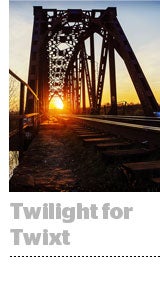 Getting agencies to buy enterprise software is hard, which is why AppNexus quietly killed off its two-year-old product Twixt in December – which included both workflow automation (aka RFP automation) and automated guaranteed functionalities.
Getting agencies to buy enterprise software is hard, which is why AppNexus quietly killed off its two-year-old product Twixt in December – which included both workflow automation (aka RFP automation) and automated guaranteed functionalities.
Ultimately, Twixt was too difficult and expensive to sell.
“The level of investment that would have been required to drive penetration, particularly on the buy side, would have been extravagantly expensive,” said Andy Atherton, the exec who lead the team of 25 devoted to Twixt.
When the product was killed, Atherton left the company, and other members of the team either left or were reassigned to different products.
Originally, AppNexus tried to deploy the product via a freemium approach, Atherton said, betting that media planners would start using the free enterprise software. Widespread adoption would eventually force agencies to upgrade to the paid enterprise version.
But after the ad tech company didn’t get traction with that model, it switched to enterprise sales. And that’s when things got expensive.
Andrew Eifler, AppNexus’ VP of buy-side product and one of the execs who conceived of Twixt, said the product faced an additional challenge because it didn’t gel with agency cost structuring. Marketers prefer to pay for time spent, so a product that saves time could potentially impact how much agencies can bill.
“The priority is maintaining the client relationships, not minimizing time with your clients’ business, because that’s how agencies get paid,” Eifler said, himself an agency vet.
AppNexus isn’t the first to face difficulties selling tech to agencies, or to try to switch business models in an attempt to pick up sales. To name one public example, albeit on a much larger scale: Turn tried and failed to switch to a SaaS model for its DSP earlier this year.
“I just think agencies are relatively slow to change processes, and not really native buyers of tech,” Atherton offered.
That said, Twixt, which had two years of engineering work put into it, wasn’t a complete loss. The buy-side portion of the automated guaranteed functionality is being welded to the Yieldex Direct product.
Agencies were mostly using the product in a test fashion, the company said, and are unlikely to be affected by the product’s sunset. And they can now use the automated guaranteed functionalities via Yieldex Direct.
As for Atherton, he’s been spending his time building a tree house for his kids. But now that he’s hammered the last nail, he’s shifting focus and looking for his next gig.














